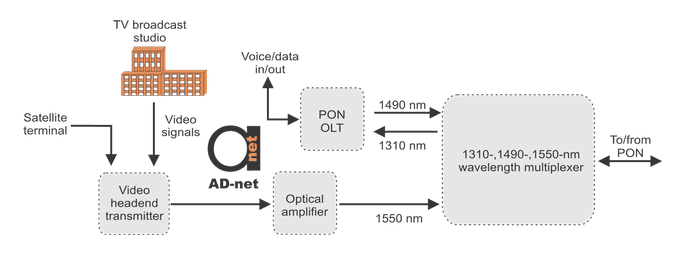Usually, service providers are offering large amount of different services regarding bandwidth connection of high capacity. Most of the services are used by customers (HDTV (multiple time shifted high definition television), VOD (video on demand), IP telephone, streaming of multimedia Internet content, two-way videoconferencing and some services might be used by distantly located organisation (externally monitored home security).
Table 1 Maximum Bandwidth Requirements per Premises for Various FTTH Services
| Service | Bandwidth Needed (Mbps) |
| Two HDTV channels (20 Mbps each) |
40 |
| Two standard digital TV channels (3 Mbps each) |
6 |
| Two Internet users (2 Mbps each) |
4 |
| Standard telephone |
0.1 |
| Video phone |
2 |
| Home security monitoring |
2 |
|
Total |
54.1 |
These specifications are requiring service providers to be able to offer 45 – 100 Mbps for existing and emerging FTTP applications.
There are three main types of VOIP, two of which are video broadcasting (video on demand and video broadcasting) and third is videoconferencing. First two require one way transmission (might have very low-rate feedback for requests), while last one requires a full duplex interactive link.
The video broadcasting requires no action from customer side. It might be used for entertainment, education, business, corporate training material.
Video on demand is more interactive and may require some co-action from customer side (start, stop, rewind or advance the video content). This type of video broadcasting is used for same purposes, but usually is used for viewing stored video files.
Standard FTTP video overlay wavelength is not possible for videoconferencing, since it requires both side audio and video transmission.
The H.323 standard allows to connect to IP-conference from any personal computer connected to the network (require bandwidth of 384 kbps). Typically videoconferencing is used for business or educational purposes.
As seen from the Table 1 HDTV requires a 20 Mbps. In situation when there is at least one HDTV customer in each of the 32 branches, the 1490 nm wavelength is not enough. Usually the separate 1550 nm wavelength is used in this situation.

Interfaces to video-related equipment in the central office.


